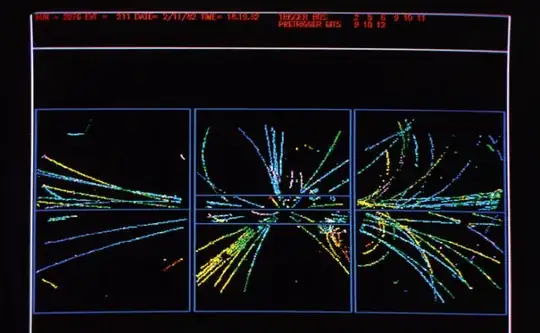Say we have a proton $p$ and an anti-proton $b$. If they're fired directly at each other, apparently they're annihilated and all that's left is energy. But protons/antiprotons have a significant mass, and radius of about 1 femtometer. What if, instead of being fired directly into each other, $p$ and $b$ instead "grazed" each other by some arbitrarily small amount. Would they always annihilate and produce energy? Would only a "portion" or them annihilate? Or would it be probabalistic, where they annihilate with some chance that depends upon how much they overlap?
Asked
Active
Viewed 89 times
1 Answers
3
Protons and antiprotons are quantum particles, this means they obey quantum mechanical kinematics, solutions of the quantum mechanical equation for "proton scattering on antiproton", and no concept as "grazing" can be quantified in the solutions.
The experiment was done in the '80s. Look how the detectors locate the multiplicity of tracks from the annihilation :
an event from UA1
The probability of proton antiproton hitting each other in the collider depends on the beam design and the quantum mechanical solution of proton antiproton scattering. Those solutions have also a probability for elastic scattering, where no annihilation takes place, the analogue of your "grazing".
anna v
- 236,935
